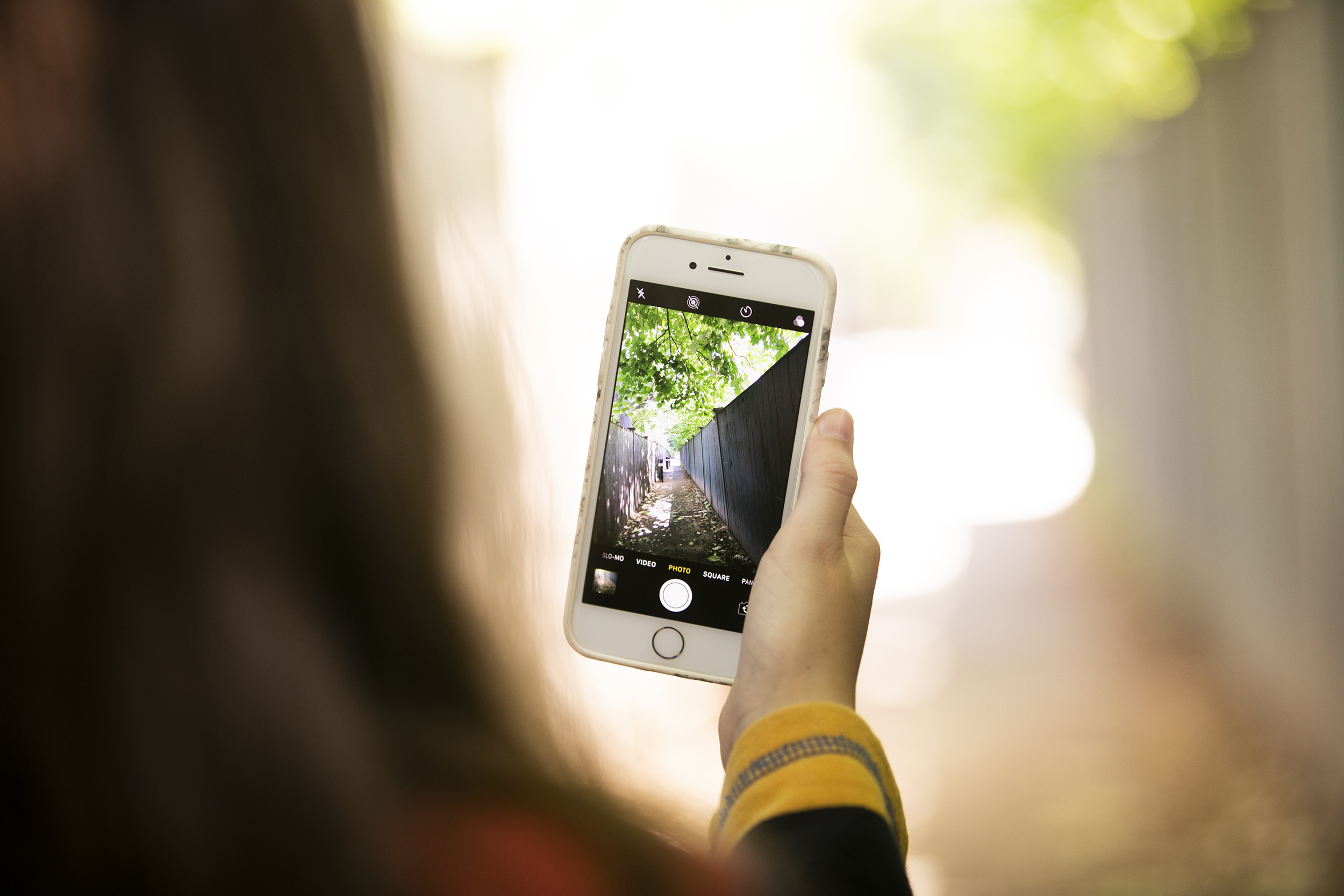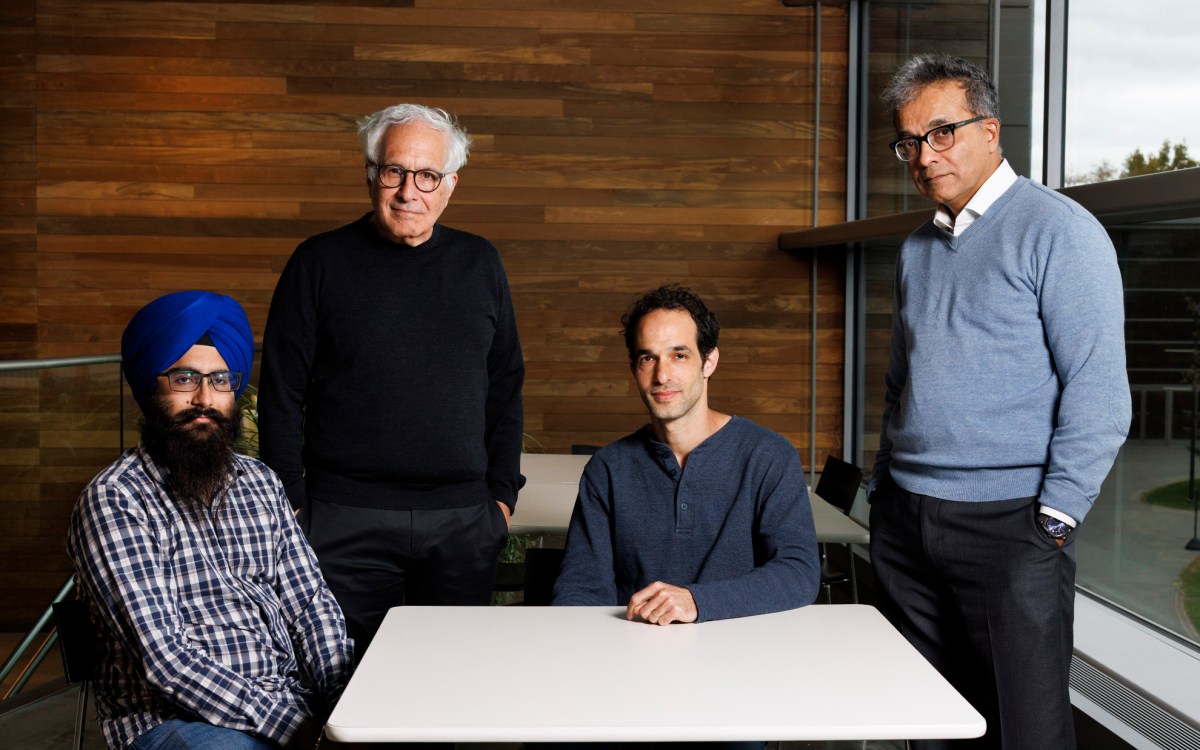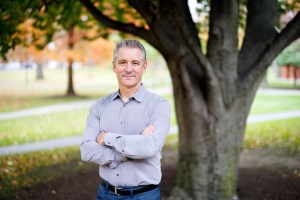
Stephanie Mitchell/Harvard Staff Photographer
Finding COVID clues in movement
Tracking mobility of individuals offers hints of whether a problem is rising or falling
This is part of our Coronavirus Update series in which Harvard specialists in epidemiology, infectious disease, economics, politics, and other disciplines offer insights into what the latest developments in the COVID-19 outbreak may bring.
Harvard scientists are leading a global research network that is using data from mobile devices and social media to document people’s movements during the COVID-19 outbreak and translate that information to help government officials set pandemic policy worldwide.
The effort, called the COVID-19 Mobility Data Network, involves about 60 academic research labs working with officials in the U.S., U.K., Canada, Mexico, India, Bangladesh, The Netherlands, and Colombia, and seeks to fill what organizers see as a gap between potentially useful data that scientists are gathering and policymakers’ need for targeted information as they make pandemic decisions that can affect people’s lives and livelihoods.
More like this
“When COVID happened and it became clear that the only interventions available to us were social-distancing interventions, travel restrictions, and so on, it became clear that we needed to process this mobility data in a way to provide insights for policymakers that would help them evaluate the situation and monitor what was going on with social distancing in their area,” said Caroline Buckee, associate professor of epidemiology at the Harvard T.H. Chan School of Public Health.
Buckee leads the effort with Satchit Balsari, assistant professor of emergency medicine at Harvard Medical School and Beth Israel Medical Center and assistant professor of global health and population at the Harvard Chan School, and Andrew Schroeder, vice president at the nonprofit humanitarian aid organization Direct Relief.
“This data is not trivial to interpret,” Buckee said. “It is a proxy for what we want to measure, which is the contact rate, but it isn’t the contact rate. So it’s really important that we don’t just say, ‘Here’s a public dashboard of stuff,’ because interpretation, careful methods, rigorous analysis in the context of specific policy needs is really important.”
With that goal, Buckee said, researchers work with specific national, state, and local governments, providing daily or near-daily reports tailored to the needs of policymakers. The reports show areas where movement of individuals rose or fell and whether that might indicate a problem emerging or easing.
“What we’re providing is very much tailored to a specific [government official]: what they need in that place,” Buckee said.
For example, Buckee said, New York City officials may want specific neighborhood-level data, or to understand whether people are moving — seen via mobility data — between two specific neighborhoods and whether, over time, those connections are changing.
Balsari said that the reports also provide important contextualization. A 15 percent decline in mobility in a smaller city, for example, may be enough to curb the coronavirus’ spread there. In Boston, however, with a larger, denser population and heavy use of public transit, even a 30 percent decline, though numerically better, may not have the same effect.
“The contextualization of this is key,” Balsari said. “The vision here is that this will vary not only by where on the epidemic curve we are, but also what places we’re talking about.”
The work builds on prior research by Buckee and Balsari that used mobile phone data for a variety of public health and global health purposes. Balsari’s work uses mobility data to inform disaster response and population health, while Buckee’s work examines mobility and infectious disease patterns. The two recently collaborated on work finding that deaths from all causes linked to Hurricane Maria in Puerto Rico put the overall toll as much as 70 times higher than the official estimate.
Balsari and Buckee said data privacy is an important concern in the network’s efforts. The COVID-19 mobility data is aggregated and anonymized to protect privacy more effectively than data provided by some commercial companies seeking to provide similar services to the government. The two said the use of this data represents a major step forward in using publicly available data to inform crisis response, akin to the revolution in crisis mapping and use of satellite imagery after the 2010 Haiti earthquake.
Though states around the country — the network is advising 20 of them — and nations around the world are emerging from initial society-wide lockdowns, Buckee said mobility data is still relevant. Officials are eager for information about how and where people are moving as society reopens. That information may prove crucial in shaping more targeted future responses, by pairing public health data with mobility information to see where population movement is linked to rising coronavirus case counts.
“We’ve shown commuting patterns correlate with seroprevalence in New York,” Buckee said. “As we see reopening, if there are places that are going to be active, we can pick that up in real time as opposed to waiting for deaths to surge several weeks later. … The reality is that a lot of places have plans to reopen despite a lack of good surveillance, and that is deeply problematic. This kind of data can at least provide you some information about what you can expect down the road.”








